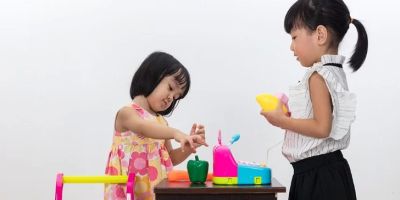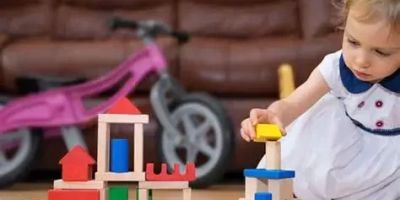How STEM Education Through Toys Can Boost Children's Development
As a parent and educator, I have always been fascinated by the way children learn and develop through play. Over the years, I've come to realize that toys can be more than just fun—they can be powerful tools for teaching crucial skills, particularly in STEM (Science, Technology, Engineering, and Mathematics) fields. While many toys are designed for entertainment, STEM-based toys offer children the opportunity to explore, experiment, and problem-solve in ways that support their cognitive and social development. In this article, I’ll delve into the benefits of STEM education through toys, how it influences children’s growth, and why it’s so important in today’s world.
1. What is STEM Education and Why is it Important?
STEM education focuses on providing children with the skills and knowledge needed to understand and solve problems in science, technology, engineering, and mathematics. As a parent, I’ve always been drawn to the idea that children should learn these concepts early, as these skills are fundamental to thriving in our modern world. From building technology to understanding complex scientific processes, the ability to think critically and solve problems is essential in nearly every aspect of life.
When I first introduced my child to STEM toys, I noticed how they allowed her to experiment, build, and explore complex ideas in a way that was engaging and enjoyable. These toys often combine learning with play, making difficult concepts more accessible and less intimidating for children. It was then that I realized how beneficial STEM toys could be in nurturing a child’s curiosity and interest in these fields from a young age.
2. Developing Critical Thinking and Problem-Solving Skills
One of the most significant benefits of STEM education through toys is the development of critical thinking and problem-solving skills. As a parent, I’ve seen firsthand how these toys encourage my child to think creatively and logically. Many STEM toys, like building blocks or puzzle games, require children to follow instructions, figure out how things work, and adjust their approach when things don’t go as planned.
I remember a moment when my daughter was playing with a set of magnetic building blocks. She was trying to build a structure, but the pieces kept falling apart. Instead of getting frustrated, she took a step back, analyzed her approach, and adjusted the design. It was a perfect example of how STEM toys teach resilience and the importance of trial and error. This experience reinforced the idea that failure is a part of the learning process and encouraged her to think critically about the problem at hand.
3. Encouraging Hands-On Learning
Another benefit of STEM toys is that they encourage hands-on, experiential learning. Unlike traditional methods of learning, which can sometimes feel passive or abstract, hands-on learning allows children to interact with the concepts they are studying directly. My child, for instance, was able to learn basic engineering principles by assembling a small robot using a STEM kit. Through this hands-on approach, she could see the immediate results of her work, which made the experience far more engaging and rewarding.
By engaging in hands-on activities, children can better understand abstract concepts. For example, a simple chemistry set can help children visualize chemical reactions and understand how different substances interact, providing them with a more concrete understanding of scientific principles. This active participation fosters curiosity and motivates children to ask questions, explore solutions, and think deeply about how the world around them works.
4. Enhancing Fine Motor Skills and Spatial Awareness
Many STEM toys are designed to enhance fine motor skills and spatial awareness, two critical aspects of early childhood development. Toys like building blocks, engineering kits, and puzzles require children to manipulate small pieces, fit parts together, and plan how to structure objects. These activities help improve hand-eye coordination, dexterity, and the ability to think in three dimensions.
I recall a time when my daughter was assembling a set of interlocking gears. As she placed each piece, she had to visualize how the parts fit together, which helped her develop a better understanding of spatial relationships. This experience not only improved her motor skills but also boosted her confidence in solving physical puzzles. STEM toys like these give children the opportunity to practice skills that are necessary in many aspects of life, from drawing to understanding architectural designs.
5. Fostering Collaboration and Communication
STEM toys are often designed to encourage teamwork, especially when working on larger projects or challenges. I’ve seen my children team up with their friends to tackle complex building projects, helping each other out, discussing strategies, and learning to collaborate effectively. These collaborative activities provide children with the opportunity to practice communication and teamwork, which are essential skills in both academic and professional environments.
For example, during a family playtime session, my son and his cousin worked together on a science experiment kit. They had to follow the instructions, share tasks, and discuss their findings as a team. This collaboration not only helped them understand the scientific concepts but also allowed them to practice patience and effective communication. By engaging in these activities, children develop both their cognitive and social skills, learning how to work with others toward a common goal.
6. Preparing for Future Careers
In today’s rapidly evolving job market, skills in STEM fields are more important than ever. From software development to environmental science, careers in these areas are in high demand. Introducing children to STEM education through toys early on sets the foundation for their future career opportunities. My own journey of integrating STEM toys into my children’s lives has sparked their interest in areas like robotics, computer programming, and environmental sustainability.
I’ve been amazed by how quickly my child became interested in coding after working with a robotics kit that introduced her to the basics of programming. By providing children with the tools to explore STEM concepts, we are opening doors to a wide range of career possibilities, from engineering to research and development. The earlier children are exposed to these fields, the more likely they are to develop a lasting interest that could shape their academic and professional paths.
As I’ve observed in my own family, STEM education through toys is more than just about having fun. It’s about nurturing curiosity, fostering critical thinking, and laying the groundwork for future success. By incorporating these toys into playtime, we are helping children build the skills they need to succeed in the 21st century, all while having a great time along the way.
SEO Title: How STEM Education Through Toys Can Boost Children's Development
SEO Keywords: STEM education through toys, STEM toys for kids, benefits of STEM toys, children’s learning through play, sensory play toys, educational STEM toys
SEO Description: Discover how STEM education through toys can enhance your child’s learning and development. Learn about the benefits of STEM toys and how they encourage creativity, critical thinking, and problem-solving skills.





